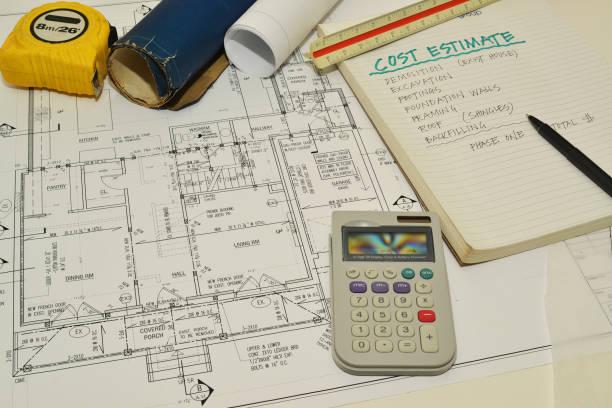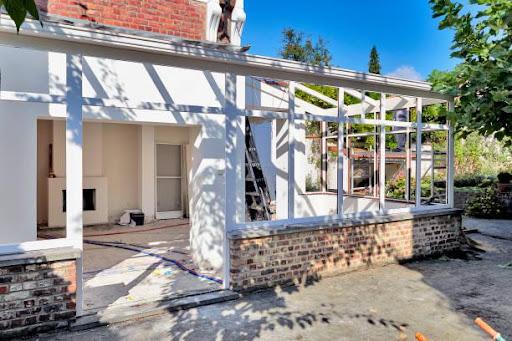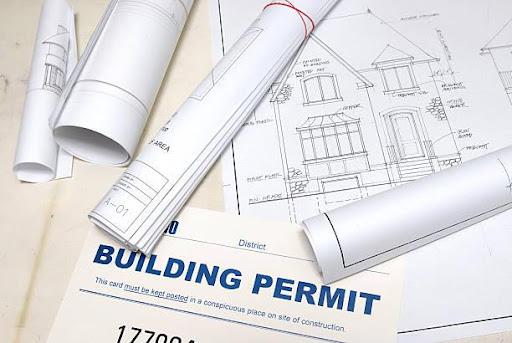Homeowners in Houston seeking to expand their living spaces and improve their properties through home additions must navigate the city’s permitting process. This process ensures compliance with building codes, safety standards, and zoning regulations. Understanding and obtaining the necessary permits are crucial for structurally sound and legally compliant construction projects. In this article, we will provide a comprehensive guide to navigating the permitting process for home additions in Houston, covering the key steps, requirements, and considerations. By empowering homeowners with the knowledge they need, we aim to facilitate successful and lawful construction projects.
You are required to acquire a permit when making additions to the existing structures at your home. Attempting to make additions without following the proper permitting process may have adverse consequences (Perry, 2021). An example of a home addition permit is the Add/Alter permit. Before we dig deep into some of the repercussions of making home additions without a permit, let’s discuss in detail the permitting process for your home additions.
Checklist Before Starting Home Additions Permit Process in Houston
1. Research Local Regulations
- Familiarize yourself with the specific permitting requirements and regulations of the City of Houston for home additions.
- Visit the official website of the City of Houston’s Permitting and Regulatory Affairs (PRA) department for up-to-date information.
2. Identify Permit Types
- Determine the type of permit(s) needed for your home addition project (e.g., Add/Alter permit, Electrical permit).
- Different types of additions may require specific permits, so ensure you acquire the correct ones for your project.
3. Consult with Professionals
- Seek guidance from a professional contractor or architect experienced with the permitting process for home additions in Houston.
- Professionals can provide valuable insights and help ensure compliance with building codes and regulations.
4. Gather Required Documentation
- Compile all necessary documents and drawings for the permit application, such as architectural plans, site plans, and engineering reports.
- Ensure the documents meet the minimum requirements for building codes and regulations.
Permitting Requirements for Home Additions in Houston
The permitting requirements for home additions in Houston, Texas, can vary depending on the specifics of your project and the local regulations. However, we provide you with a general overview of the typical permitting process and requirements for home additions in Houston. Keep in mind that this information is based on common practices and regulations as a cutoff in September 2021, so it’s always advisable to consult with the City of Houston’s Permitting and Regulatory Affairs (PRA) department or a professional contractor for the most up-to-date and accurate information.
Houston Permit Application Process For Home Additions
The Houston permit application process for home additions involves several steps to ensure compliance with local building codes and regulations before construction begins.
Step 1: Apply and Pay
The initial step towards the acquisition of a home addition permit is filling out the paperwork to initiate the application process. You should check with your local municipality or government to understand where to start off with this step. Some states/ municipalities allow you to make this application through their online website, while others will demand that you fill in paperwork from their offices or through qualified agencies.
Step 2: Submit Plans
The next step is sharing your plans regarding the project at hand. When a project is big, a blueprint is required. Once the plan has been submitted, the inspectors will take time to review it and provide their feedback on whether you should proceed with the project, make alterations, or halt. There are various aspects that are looked at by the inspectors when approving a plan. For instance, the addition of a deck will require that it meets the codes for railing spacing, footing depth, and weight limits to be supported (Perry, 2021). As such, the inspectors will need to understand the type of fasteners to be used, the sizes of the posts, and joists among other parameters.
Step 3: Permit Plans Review

You are required to prepare and submit documents and drawings necessary for home additions for review by the inspectors to ensure that they are compliant with the state and local building codes. The documents and drawings are stamped as DPS-approved if the reviewer determines that they have made adequate requirements for code compliance (Bitler, 2021). In some cases, the documents and drawings may fail to meet the minimum requirements for building codes and the homeowner will be required to make corrections and resubmit them for review.it is prudent for a homeowner to research and review all the residential construction codes before drawing a plan for home additions. For starters, you are required to find a listing of codes, laws, policies, and standards associated to residential building construction.
The policies are how you approach or rather interpret the building codes in application to permitting process and residential building, while the codes are considered as the law governing residential constructions. You should understand the common codes used in different tasks during home additions, including building codes, electrical codes, energy conservation codes, mechanical codes, fuel and gas codes, swimming pool codes, fire protection codes, and other relevant and modes codes applicable. Common policies include DPS policies, pending code adoption, code modifications, pending code interpretations, and prior codes.
Step 4: Pay the Balance of Permit Fees

Yes, permits are acquired at a fee. The cost of a permit varies based on the type of permit and policies and regulations set by the local government. However, typical permits cost approximately $50 for fencing your home to hundreds of dollars for other additions such as the room addition.
Houston Home Addition Permit Fees: Know Your Costs
To determine the permit fees for a home addition in Houston, Texas, you would need to contact the City of Houston’s Permitting and Regulatory Affairs (PRA) department or visit their official website. The PRA department should be able to provide you with the most accurate and up-to-date information regarding permit fees and any other requirements or documents you may need for your home addition project.
The payment for the permits is made in person or through online platforms established at the DPS website or offices. You cannot receive the permit until the fees are made to the DPS in full.
It’s always recommended to consult directly with the local permitting authority or a professional contractor who is familiar with the regulations and fee structures in Houston for accurate and specific information regarding permit fees for a home addition.
Step 5: Permit Issuance
Permit issuance is the key and most important step in the permitting process for home additions. This is done at the DPS after all the fees have been made, and all the documentation and requirements are deemed compliant with the codes and standard policies. The issuance of a permit is made by the permit technician.
Pro Tip Takeaway: Although the permits can be issued to you through online or ePlans, you are required to print them and have hardcopies with you on site for inspector. This will save you on time and ensures that the inspector’s work is easy and smooth.
Step 6: Post the Notification Sign
Once the permit is issued, usually send to the homeowner in person or through an email, he or she is required to post the permit notification sign. The sign is often posted within three business days after you have received it. The permit sign is required to remain posted on the structure or property under construction for 30 days after the issuance of the permit (Martin, 2021). As a homeowner, you are responsible for posting the sign, and it must meet certain specifications as directed by the building codes and standards. For instance, it must not be more than five feet away from the property’s front line, and it should be mounted between 30 to 60 inches above the ground level.
Pro Tips Takeaway: the permit notification sign should be well-posted, and inspected by the DPS prior to the start of home additions. Failure of the sign to pass the DPS inspection means that you cannot proceed with any other inspection until the DPS inspector approves it.
Step 7: Construct your Addition
After the permit has been issued and the permit notification sign has been posted properly, you can begin the construction work. All work in the construction site must conform and comply with the approved documentation and drawings, and the permit should be available for DPS inspectors and remain on site until the project is completed.
Pro Tips Takeaway: Upon obtaining permits from the DPS, you must make a request for mandatory inspection for approval of the permitted project and ensure that the structure or building is ready for occupancy or use. Ensure that your project is clearly marked with an address or a lot number and that the inspections are stamped by the county for the inspector’s review.
Step 8: Schedule for Inspections

As you carry out construction tasks of your home, you will be required to schedule inspections all along to ensure that the local authority or the city is able to verify that your performance is in accordance with your plans and are compliant with the building codes. You should request the inspections at least 24 hours before the date of inspection is required. In most cities, inspections are scheduled online using a link directed to Inspection requests except for partial inspection requests (MontgomeryCountyMD.GOV, 2023). The inspection of the building process follows a particular sequence as described by each project type.
Pro Tips Takeaway: During scheduling requests, you are required to present the type of your permit, the number of the permit, and the contact identification number usually printed on your permit. Finding an inspector for project inspection is crucial, and you need to know the type of permit and the assigned inspectors.
Step 9: Permit Revision
Sometimes along the way, you might want to change some aspects and specifications of your structure or building. In such cases, you will be required to request a permit revision. The first steps to undertake when requesting permit revision is following the first to the fourth steps described above. Permit revisions clearly indicate what exactly is being changed or altered with a square footage of the field or area being changed as well as the cost adjustment due to such changes. The DPS often calculates the revision fees, and the homeowner is required to pay in-person or online (MontgomeryCountyMD.GOV, 2023).
Step 10: Schedule a Final Inspection

Although various inspections are required to be made during construction processes, such as inspecting inside the walls before covering them up, a final inspection is the final stage of the permitting process for home additions. The final inspection should be requested one day prior to the actual date of inspection.
Cost of Obtaining a Home Addition Permit
The prices of permit acquisition vary based on the nature of the adding project. Some of the common types of adding projects to your home that require you to acquire a building permit are:
- Floor addition
- Expansion of the bathroom
- Expansion of the kitchen space
- Attic finishing project
- Garage enclosure
- Walls retainment
- Verandah additions
- Fencing
- Additions to rooms
- Addition or construction of the in-law suite
- Construction of carports and sheds
These permits may require different types of permits. Some of the common permits and their costs are tabulated below:
Permit Type | Average costs (in USD) |
Bathroom | 175-20000 |
Roofing | 255-500 |
Building a house | 1200-2000 |
Fence | 20-60 |
Kitchen | 150-900 |
Shed building | 100-1000 |
20-150 | |
Deck | 225-500 |
HVAC | 250-400 |
Garage enclosure | 1200-15000 |
Are you Ready for a Home Addition?
If you need to make additions to your home, you should consider acquiring the right permit before kicking off the project. If you need any assistance with the permitting process for home additions, don’t hesitate to contact Smart Remodelling LLC and experience professional services. The consultations on home additions permits are free, and should you need any help visit our website or call us at 832-800-8889.






